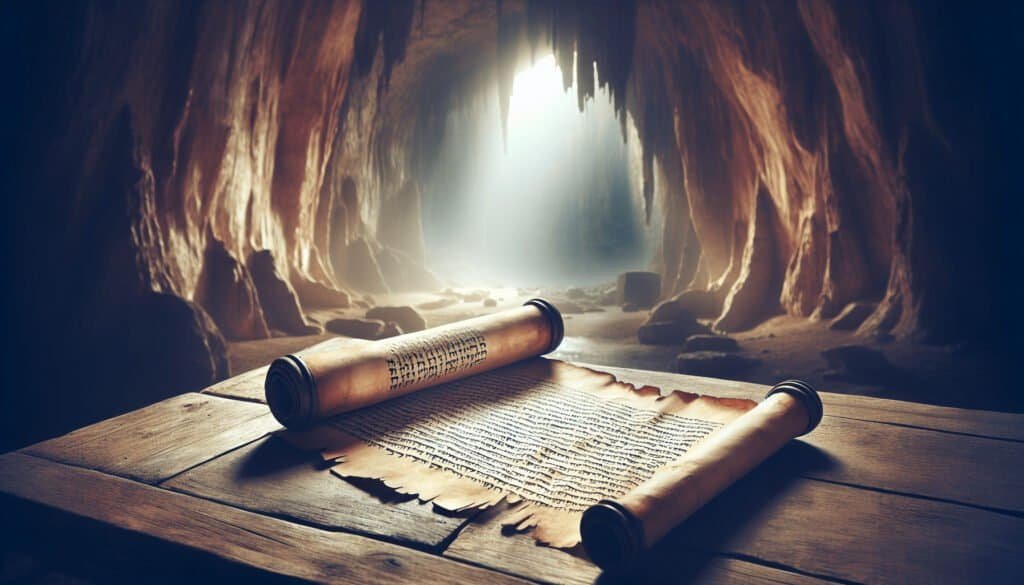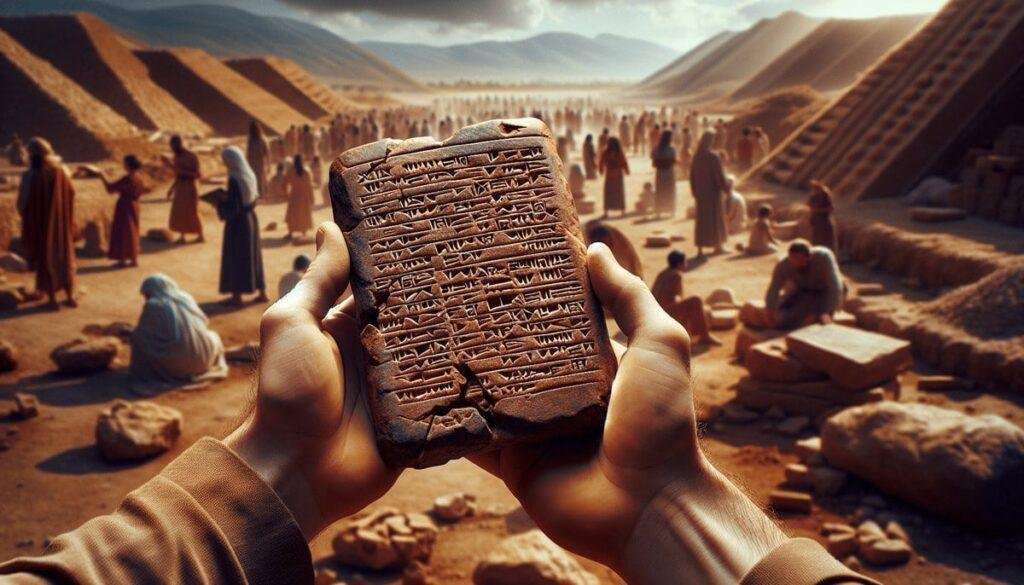What comes to mind when you think of the Qumran Caves? Perhaps it’s the whispers of ancient scrolls, the stories they’ve shared, or the quiet fortitude of those who gathered there. Qumran, nestled along the shores of the Dead Sea, isn’t just an archaeological site; it’s a treasure trove of communal history and spiritual significance waiting to be unpacked. Let’s unravel the nuances hidden within those weathered stones and engage with the essence of communal scripture reading that flourished in this fascinating place.

The Qumran Caves: Context and Significance
Looking back, the Qumran Caves housed some of the most significant discoveries of the 20th century—the Dead Sea Scrolls. But what’s often overlooked is how these findings breathed life into community practices and spiritual engagement for the groups that inhabited this area. By appreciating these contexts, you can better understand the joy that came from their shared experiences in scripture reading.
Historical Background
The community that dwelled near Qumran, often identified with the Essenes, existed around the late Second Temple period. They weren’t just scholars; they were a vibrant community that believed in strict adherence to laws and the pursuit of purity. Their practices included daily rituals, communal living, and extensive scripture reading, all of which fostered a sense of togetherness.
The Discovery of the Scrolls
In 1947, a young Bedouin shepherd stumbled upon a cave containing pots filled with ancient manuscripts. This moment marked the beginning of centuries-old stories coming back to light, capturing the world’s attention. The scrolls included not only biblical texts but also a wealth of sectarian writings that shed light on the community’s beliefs, including the significance of communal activities like reading scripture.
Understanding Communal Scripture Reading
You might wonder why scripture reading in a communal setting mattered so much to the Qumran community. What made this act not just a routine task, but a source of joy and unity?
A Shared Experience
Communal scripture reading acted as a bonding ceremony, intertwining the lives of those present. Imagine gathering in a serene cave, surrounded by fellow seekers, sharing the rich heritage contained within the scrolls. It fostered a sense of belonging and collective identity, particularly in a time of sociopolitical upheaval.
Spiritual Enrichment
Reading in communal settings goes beyond merely reciting words. It involves interpreting and discussing their meanings together, enriching your understanding and spiritual life. The Qumran practitioners saw scripture not just as historical texts but as living documents that could transform lives and communities.
Reflection and Interpretation
When you read scripture alone, your understanding is shaped solely by your perspective. But in a group, diverse insights emerge, enhancing your grasp of the texts’ richness. Each member’s interpretation acted as a new layer of depth and understanding, creating a tapestry of thought that colors the collective experience.

Archaeological Insights into Qumran
Understanding the historical importance of Qumran deepens your appreciation for the community’s approach to communal scripture reading. Archaeological findings reveal much about their lifestyle and practices.
The Caves: A Sanctuary and Scriptural Archive
The Qumran Cave complex consists of 11 caves, several of which contained scrolls that provided a window into the community’s beliefs and practices. You’d be surprised at how these caves were more than just storage spaces—they were sanctuaries for reflection, devotion, and communal bond.
The Scriptorium
Archaeological evidence points to the existence of a scriptorium, a place where community members likely copied and preserved important texts. This meticulous work wasn’t merely practical; it symbolized a commitment to scholarship and collective identity. Through this practice, they safeguarded their beliefs and traditions while creating opportunities for education and discussion among themselves.
Ritual Bathing: A Precursor to Reading
The presence of ritual baths, or mikvot, suggests the importance of purification before engaging with sacred texts. It indicates that they viewed scripture not just as words but as a medium for connecting with the divine. This purification exemplified their reverence for the texts and the importance of approaching scripture with a clear heart and mind.
Theological Implications
You may find it enlightening to appreciate how the communal reading of scripture extended beyond social interaction and entered the realm of theology and spirituality.
The Role of Scripture in Community Life
For the Qumran community, scripture was foundational to their understanding of identity, ethics, and spirituality. Commune around sacred texts unified them in their unique beliefs and practices. This social dimension of scripture transformed communal gatherings into sacred rituals, infusing joy and deep meaning into shared experiences.
The Covenant Relationship
God’s covenant with His people was central to their existence. Through communal readings, they continually revisited these pacts, reinforcing their roles as a chosen community. This act of remembrance wasn’t just about recalling the past; it was a lived experience that invigorated faith and enhanced their communal joy.
Lessons from the Qumran Community
What can you learn from the wisdom of the Qumran community? Their practices hold rich lessons for modern believers navigating today’s spiritual landscapes.
Value of Community
The essence of community shines through in their approach to scripture. You might find that participating in communal readings today can enhance your own spiritual journey, providing insights and perspectives you might not consider alone.
Rediscovery of Joy
In a world that often prioritizes individualism, the joy experienced in shared moments of scripture reading is something to be cherished. Reconnecting with your community can rekindle that spark of spiritual joy and collective understanding.
Lifelong Learning
The Qumran community’s dedication to scripture underscores the importance of ongoing learning. You can approach your practice of scripture reading with a fresh perspective each time, always seeking to uncover new insights and deepen your understanding.
The Modern Context of Communal Scripture Reading
How does the legacy of Qumran inform today’s practices? Communities of faith today can learn much from those ancient gatherings.
Embracing Technology
In our fast-paced world, technology often drives our interactions. However, you can utilize platforms that allow virtual communal readings, bringing people together across distances while embracing the essence of collective engagement with scripture.
Diverse Perspectives
Modern communities are a tapestry of beliefs and backgrounds, much like the Qumran community. Encouraging diverse perspectives in discussions can enrich your understanding, just as it did for the Essenes. Consider participating in multi-denominational gatherings that emphasize a shared love for scripture, even when interpretations may differ.
Finding Spaces for Reflection
You can create sacred spaces within your community that foster reflection and dialogue. Whether it’s a quiet room in your church or a coffee shop corner, inviting people to sit together with scripture can reintroduce the joy of reading together.
Conclusion: Tying the Ancient to the Modern
You’ve likely gathered that the communal scripture reading of the Qumran community has timeless relevance. By understanding the significance these texts held for them, you can appreciate the depth of joy found in shared practice today.
The echoes of those ancient gatherings resonate through time, inviting you to rediscover a sense of community and spirituality in today’s world. So next time you open a scripture text, consider gathering a few friends, sharing insights, and basking in the warmth of collective engagement. It’s a simple step towards reviving the spirit of Qumran—where joy, community, and scripture harmoniously intertwine.


